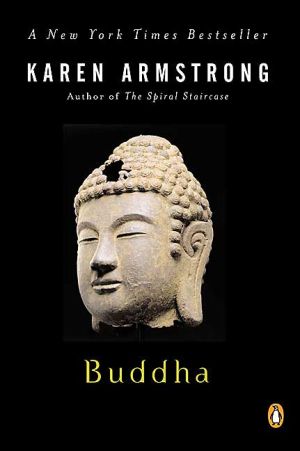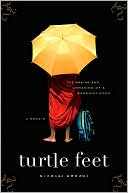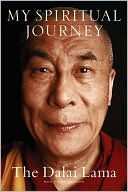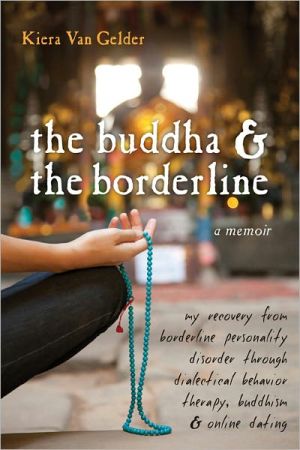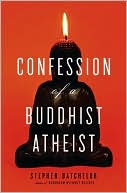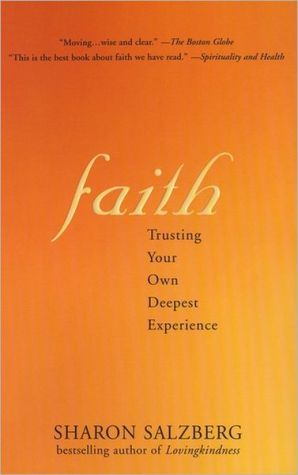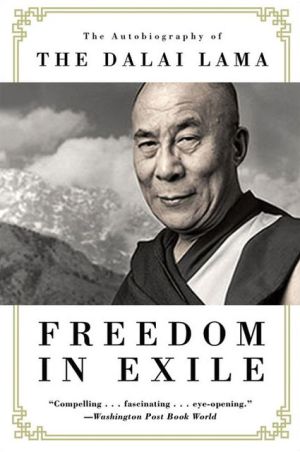Buddha
With such bestsellers as A History of God and Islam, Karen Armstrong has consistently delivered 'penetrating, readable, and prescient' (The New York Times) works that have lucidly engaged a wide range of religions and religious issues. In Buddha she turns to a figure whose thought is still reverberating throughout the world 2,500 years after his death.\ Many know the Buddha only from seeing countless serene, iconic images. But what of the man himself and the world he lived in? What did he...
Search in google:
This rich, timely and highly original portrait of the Buddha explores both the archetypal religious icon and Buddha the man. In lucid and compelling prose, Armstrong brings to life the Buddha's quest, from his renunciation of his privileged life to the discovery of a truth that he believed would utterly transform human beings and enable them to live at peace in the midst of life's suffering. BUDDHA also expands to focus and meditate on the culture and history of the time, as well as the Buddha's place in the spiritual history of humanity, and the special relevance of his teachings to our own society as we again face a crisis of faith. Boston Globe ...[a] brief and historically informed account of Buddha and Buddhism...
Renunciation (Chapter 1)\ One night toward the end of the sixth century B.C.E., a young man called Siddhatta Gotama walked out of his comfortable home in Kapilavatthu in the foothills of the Himalayas and took to the road.1 We are told that he was twenty-nine years old. His father was one of the leading men of Kapilavatthu and had surrounded Gotama with every pleasure he could desire; he had a wife and a son who was only a few days old, but Gotama had felt no pleasure when the child was born. He had called the little boy Rahula, or "fetter": the baby, he believed, would shackle him to a way of life that had become abhorrent.2 He had a yearning for an existence that was "wide open" and as "complete and pure as a polished shell," but even though his father's house was elegant and refined, Gotama found it constricting, "crowded" and "dusty." A miasma of petty tasks and pointless duties sullied everything. Increasingly he had found himself longing for a lifestyle that had nothing to do with domesticity, and which the ascetics of India called "homelessness."3 The thick luxuriant forests that fringed the fertile plain of the Ganges river had become the haunt of thousands of men and even a few women who had all shunned their families in order to seek what they called "the holy life" (brahmacariya), and Gotama had made up his mind to join them.\ It was a romantic decision, but it caused great pain to the people he loved. Gotama's parents, he recalled later, wept as they watched their cherished son put on the yellow robe that had become the uniform of the ascetics and shave his head and beard.4 But we are also told that before he left, Sidhatta stole upstairs, took one last look at his sleeping wife and son, and crept away without saying goodbye.5 It is almost as though he did not trust himself to hold true to his resolve should his wife beg him to stay. And this was the nub of the problem, since, like many of the forest-monks, he was convinced that it was his attachment to things and people which bound him to an existence that seemed mired in pain and sorrow. Some of the monks used to compare this kind of passion and craving for perishable things to a "dust" which weighed the soul down and prevented it from soaring to the pinnacle of the universe. This may have been what Siddhatta meant when he described his home as "dusty." His father's house was not dirty, but it was filled with people who pulled at his heart and with objects that he treasured. If he wanted to live in holiness, he had to cut these fetters and break free. Right from the start, Siddhatta Gotama took it for granted that family life was incompatible with the highest forms of spirituality. It was a perception shared not only by the other ascetics of India, but also by Jesus, who would later tell potential disciples that they must leave their wives and children and abandon their aged relatives if they wanted to follow him.6\ Gotama would not, therefore, have agreed with our current cult of "family values." Nor would some of his contemporaries or near-contemporaries in other parts of the world, such as Confucius (551-479) and Socrates (469-399), who were certainly not family-minded men, but who would, like Gotama himself, become key figures in the spiritual and philosophical development of humanity during this period. Why this rejectionism? The later Buddhist scriptures would evolve elaborate mythological accounts of Gotama's renunciation of domesticity and his "Going Forth" into homelessness, and we shall consider these later in this chapter. But the earlier texts of the Pali Canon give a starker version of the young man's decision. When he looked at human life, Gotama could see only a grim cycle of suffering, which began with the trauma of birth and proceeded inexorably to "aging, illness, death, sorrow and corruption."7 He himself was no exception to this universal rule. At present he was young, healthy and handsome, but whenever he reflected on the suffering that lay ahead, all the joy and confidence of youth drained out of him. His luxurious lifestyle seemed meaningless and trivial. He could not afford to feel "revolted" when he saw a decrepit old man or somebody who was disfigured by a loathsome illness. The same fate-or something even worse-would befall him and everybody he loved.8 His parents, his wife, his baby son and his friends were equally frail and vulnerable. When he clung to them and yearned tenderly toward them, he was investing emotion in what could only bring him pain. His wife would lose her beauty, and little Rahula could die tomorrow. To seek happiness in mortal, transitory things was not only irrational: the suffering in store for his loved ones as well as for himself cast a dark shadow over the present and took away all his joy in these relationships.\ But why did Gotama see the world in such bleak terms? Mortality is a fact of life that is hard to bear. Human beings are the only animals who have to live with the knowledge that they will die one day, and they have always found this vision of extinction difficult to contemplate. But most of us manage to find some solace in the happiness and affection that is also part of the human experience. Some people simply bury their heads in the sand and refuse to think about the sorrow of the world, but this is an unwise course, because, if we are entirely unprepared, the tragedy of life can be devastating. From the very earliest times, men and women devised religions to help them cultivate a sense that our existence has some ultimate meaning and value, despite the dispiriting evidence to the contrary. But sometimes the myths and practices of faith seem incredible. People then turn to other methods of transcending the sufferings and frustrations of daily life: to art, music, sex, drugs, sport or philosophy. We are beings who fall very easily into despair, and we have to work very hard to create within ourselves a conviction that life is good, even though all around us we see pain, cruelty, sickness and injustice. When he decided to leave home, Gotama, one might think, appeared to have lost this ability to live with the unpalatable facts of life and to have fallen prey to a profound depression.\ Yet that was not the case. Gotama had indeed become disenchanted with domestic life in an ordinary Indian household, but he had not lost hope in life itself. Far from it. He was convinced that there was a solution to the puzzle of existence, and that he could find it. Gotama subscribed to what has been called the "perennial philosophy," because it was common to all peoples in all cultures in the premodern world.9 Earthly life was obviously fragile and overshadowed by death, but it did not constitute the whole of reality. Everything in the mundane world had, it was thought, its more powerful, positive replica in the divine realm. All that we experienced here below was modeled on an archetype in the celestial sphere; the world of the gods was the original pattern of which human realities were only a pale shadow. This perception informed the mythology, ritual and social organizations of most of the cultures of antiquity and continues to influence more traditional societies in our own day. It is a perspective that is difficult for us to appreciate in the modern world, because it cannot be proved empirically and lacks the rational underpinning which we regard as essential to truth. But the myth does express our inchoate sense that life is incomplete and that this cannot be all there is; there must be something better, fuller and more satisfying elsewhere. After an intense and eagerly awaited occasion, we often feel that we have missed something that remains just outside our grasp. Gotama shared this conviction, but with an important difference. He did not believe that this "something else" was confined to the divine world of the gods; he was convinced that he could make it a demonstrable reality in this mortal world of suffering, grief and pain.\ Thus, he reasoned to himself, if there was "birth, aging, illness, death, sorrow and corruption" in our lives, these sufferings states must have their positive counterparts; there must be another mode of existence, therefore, and it was up to him to find it. "Suppose," he said, "I start to look for the unborn, the unaging, unailing, deathless, sorrowless, incorrupt and supreme freedom from this bondage?" He called this wholly satisfactory state Nibbana ("blowing out").10 Gotama was convinced that it was possible to "extinguish" the passions, attachments and delusions that cause human beings so much pain, rather as we snuff out a flame. To attain Nibbana would be similar to the "cooling" we experience after we recover from a fever: in Gotama's time, the related adjective nibbuta was a term in daily use to describe a convalescent. So Gotama was leaving home to find a cure for the sickness that plagues humanity and which fills men and women with unhappiness. This universal suffering which makes life so frustrating and miserable was not something that we were doomed to bear forever. If our experience of life was currently awry, then, according to the law of archetypes, there must be another form of existence that was not contingent, flawed and transient. "There is something that has not come to birth in the usual way, which has neither been created and which remains undamaged," Gotama would insist in later life. "If it did not exist, it would be impossible to find a way out."11\ A modern person may smile at the naïveté of this optimism, and find the myth of eternal archetypes wholly incredible. But Gotama would claim that he did find a way out and that Nibbana did, therefore, exist. Unlike many religious people, however, he did not regard this panacea as supernatural. He did not rely on divine aid from another world, but was convinced that Nibbana was a state that was entirely natural to human beings and could be experienced by any genuine seeker. Gotama believed that he could find the freedom he sought right in the midst of this imperfect world. Instead of waiting for a message from the gods, he would search within himself for the answer, explore the furthest reaches of his mind, and exploit all his physical resources. He would teach his disciples to do the same, and insisted that nobody must take his teaching on hearsay. They must validate his solutions empirically, in their own experience, and find for themselves that his method really worked. They could expect no help from the gods. Gotama believed that gods existed, but was not much interested in them. Here again, he was a man of his time and culture. The people of India had worshipped gods in the past: Indra, the god of war; Varuna, the guardian of the divine order; Agni, the fire god. But by the sixth century, these deities had begun to recede from the religious consciousness of the most thoughtful people. They were not exactly regarded as worthless, but they had become unsatisfactory as objects of worship. Increasingly, people were aware that the gods could not provide them with real and substantial help. The sacrifices performed in their honor did not in fact alleviate human misery. More and more men and women decided that they must rely entirely on themselves. They believed that the cosmos was ruled by impersonal laws to which even the gods were subject. Gods could not show Gotama the way to Nibbana; he would have to depend upon his own efforts.\ Nibbana was not, therefore, a place like the Christian Heaven to which a believer would repair after death. Very few people in the ancient world at this point hoped for a blissful immortality. Indeed, by Gotama's day, the people of India felt imprisoned eternally in their present painful mode of existence, as we can see from the doctrine of reincarnation, which had become widely accepted by the sixth century. It was thought that a man or a woman would be reborn after death into a new state that would be determined by the quality of their actions (kamma) in their present life. Bad kamma would mean that you would be reborn as a slave, an animal or a plant; good kamma would ensure a better existence next time: you could be reborn as a king or even as a god. But rebirth in one of the heavens was not a happy ending, because divinity was no more permanent than any other state. Eventually, even a god would exhaust the good kamma which had divinized him; he would then die and be reborn in a less advantageous position on earth. All beings were, therefore, caught up in an endless cycle of samsara ("keeping going"), which propelled them from one life to another. It sounds like a bizarre theory to an outsider, but it was a serious attempt to address the problem of suffering, and can be seen as inherently more satisfactory than attributing human fate to the frequently erratic decisions of a personalized god, who often seems to ensure that the wicked prosper. The law of kamma was a wholly impersonal mechanism that applied fairly and without discrimination to everybody. But the prospect of living one life after another filled Gotama, like most other people in northern India, with horror.\ This is perhaps difficult to understand. Today many of us feel that our lives are too short and would love the chance to do it all again. But what preoccupied Gotama and his contemporaries was not so much the possibility of rebirth as the horror of redeath. It was bad enough to have to endure the process of becoming senile or chronically sick and undergoing a frightening, painful death once, but to be forced to go through all this again and again seemed intolerable and utterly pointless. Most of the religious solutions of the day were designed to help people extricate themselves from samsara and achieve a final release. The freedom of Nibbana was inconceivable because it was so far removed from our everyday experience. We have no terms to describe or even to envisage a mode of life in which there is no frustration, sorrow or pain, and which is not conditioned by factors beyond our control. But Indian sages of Gotama's day were convinced that this liberation was a genuine possibility. Western people often describe Indian thought as negative and nihilistic. Not so. It was breathtakingly optimistic and Gotama shared this hope to the full.\ When he left his father's house clad in the yellow robes of a mendicant monk who begged for his food, Gotama believed that he was setting out on an exciting adventure. He felt the lure of the "wide open" road, and the shining, perfect state of "homelessness." Everybody spoke of the "holy life" at this time as a noble quest. Kings, merchants and wealthy householders alike honored these bhikkhus ("almsmen") and vied with one another for the privilege of feeding them. Some became their regular patrons and disciples. This was no passing craze. The people of India can be as materialistic as anybody else, but they have a long tradition of venerating those who seek the spiritual, and they continue to support them. Still, there was a special urgency in the Ganges region in the late sixth century B.C.E. People did not regard the renunciants as feeble drop-outs. There was a spiritual crisis in the region. The sort of disillusion and anomie that Gotama had experienced was widespread, and people were desperately aware that they needed a new religious solution. The monk was thus engaged in a quest that would benefit his fellows, often at huge cost to himself. Gotama was often described in heroic imagery, suggesting strength, energy and mastery. He was compared to a lion, a tiger and a fierce elephant. As a young man, he was seen as a "handsome nobleman, capable of leading a crack army or a troop of elephants."12 People regarded the ascetics as pioneers: they were exploring the realms of the spirit to bring succor to suffering men and women. As a result of the prevailing unrest, many yearned for a Buddha, a man who was "enlightened," who had "woken up" to the full potential of humanity and would help others to find peace in a world that had suddenly become alien and desolate.
Introductionxi1.Renunciation12.Quest363.Enlightenment664.Dhamma985.Mission1226.Parinibbana162Notes189Glossary201
\ From Barnes & Noble"I never read reviews," Karen Armstrong insists, and one is inclined to accept the word of this ex-nun. Nevertheless, as enthusiastic readers, we can't resist wishing that she'd lapse just a bit, at least enough to savor critics' recent praise about her Buddha in Penguin Lives and Islam, A Short History. In the 30 years since she left the Society of the Holy Child Jesus, this resolute professor has moved theologically further and further afield. Once content to examine Christianity, Judaism, and Islam, Professor Armstrong here explores the life of the founder of Buddhism. "It's inevitable that people turn to more than one religious tradition for inspiration," she explains and then launches into a very Buddha-like aphorism: "Religion," she says, "is like a raft. Once you get across the river, moor the raft, and go on. Don't lug it with you if you don't need it anymore." Which, we suspect, is also a very good reason for not reading reviews.\ \ \ \ \ Boston Globe...[a] brief and historically informed account of Buddha and Buddhism...\ \ \ Philadelphia Inquirer...a deft study...\ \ \ \ \ Baton Rouge AdvocateEverywhere, [Armstrong] emphasizes Buddhism's pragmatism, while acknowledging historic divisions that have occurred in the religion.\ \ \ \ \ From The CriticsIn this biography of Buddha, Armstrong, a former Roman Catholic nun and noted author of writings on monotheistic religions, incorporates a subtle blend of Judeo-Christian beliefs and other Axial Age theologies to highlight and, in essence, westernize Buddhist teachings. Not unlike Jesus Christ, Sidhatta Gotama, the man who became Buddha, did not consider himself an object of devotion and worship. In the book's introduction, the author admits to having limited (if not unreliable) information on Gotama's early life and even his birth date. The biography—a nontraditional blend of history and philosophy—begins with Gotama's renunciation of his prior life, leaving his wife and child behind and opting for an unburdened existence. The pursuit of enlightenment meant a release of egotism; family bonds prevented a seeker from entering a higher plane. Using the terminology of the Pali Canon, believed to be the language of Gotama himself, Armstrong focuses on the development of the Buddha's teachings. This is an excellent primer for students of religion or others interested in spiritual growth. Written in clear and accessible language, this is a short yet comprehensive text.\ —Scott Markwell \ \ \ \ \ \ \ Publishers WeeklyArmstrong's esteemed works, including such standards as A History of God and The Battle for God, have primarily focused on the monotheism of the Middle East. Now she turns farther eastward to craft this short biography for the Penguin Lives series. Armstrong carefully ties the Buddha's time to our own and champions his spiritual discoveries with an understated dignity that even the Buddha might bless. While exercising a scholar's restraint, she reveals a detectable compassion for Sidhatta Gotama, the radical who walked away from a pleasure palace because he refused to "remain locked in an undeveloped version" [of himself]. Armstrong overcame peculiar challenges to write about this historical figure who became "a type rather than an individual," as his personality and life particulars evaporated into the power of his selflessness. She turned this lack of details for a conventional biography to our advantage, opting to enhance Gotama's story with the broad canvas of his time and culture, thus making him accessibly human. This handsome and solid portrait is sure to become a classic; it is a refined and readable biography of a pivotal character in human history. It is likely true that when the 80-year-old Buddha died he had, as the sutra says, "gone beyond the power of words," but in this thoughtful and revealing study, Armstrong has come near to proving the scriptures wrong. (Feb.) Forecast: Despite the plethora of Buddhist books on the market, few recent Buddha biographies have been written for a general audience. Armstrong's superb reputation should help sales, and Viking plans a six-city author tour and national publicity. Copyright 2001 Cahners Business Information.\ \ \ \ \ Library JournalThis sterling work by Armstrong (religion, Leo Baeck Coll.; A History of God; The Battle for God) is anything but standard fare. Armstrong combines the abilities of storyteller, historian, and interpreter of Buddhist thought to create a work that is both fascinating and informative. What makes this such a strong and engaging work is that she uses her discriminating insight as a historian while recognizing that "the people of North India were not interested in history in our sense: they were more concerned about the meaning of historical events." This insight is applied effectively throughout, as Armstrong considers the Buddhist teaching encapsulated in the major events of the Buddha's life. Her explications have great clarity and power, making this work essential reading for those looking for a brief introduction to the Buddha's life and Buddhist thought.--David Bourquin, California State Univ., San Bernardino Copyright 2001 Cahners Business Information.\ \ \ \ \ Kirkus Reviews An excellent primer on the Buddha's life and teachings. Departing from her usual Judeo-Christian stomping grounds (The Battle for God, 2000, etc.) to pen a biography of Siddhatha Gotama (circa 563-483 b.c.), Armstrong admits up front that she has set herself no easy task. The little information available about his life simply will not"satisfy the criteria of modern scientific history." In addition, Gotama himself would likely reject an effort to chronicle his doings, as"throughout his life he fought against the cult of personality and endlessly deflected the attention of his disciples from himself." In response to these difficulties, Armstrong has produced not so much a rendering of the few extant details of Gotama's quotidian life, but an account of how his circumstances led him to develop one of the great religions. She makes vivid the vanished world of the turbulent Ganges basin from outlines provided by the earliest texts available, those written in the North Indian dialect of Pali and preserved by Buddhists in Sri Lanka, Burma, and Thailand. Beginning with Gotama's rejection of his family to join one of the many bands of mendicant monks in search of a higher truth, Armstrong creates a profile of an intensely practical man. When he cannot reach Nirvana using any other teacher's practice, Gotama makes up his own, rejecting"abstruse theories about the creation of the universe or the existence of a Supreme Being" in favor of a series of practices to be strictly followed. The resultant religion was based entirely on actions and was open to all, something truly revolutionary in a land whose culture was based on an unshakable caste system. Armstrong details these practicesandtheories and also provides an invaluable glossary. Those who wish to acquaint themselves with how Buddhism came to be, and with the individual who created it, will find this an essential text. Author tour\ \
